Last Revised: April 12, 2024
Revision 2/2018
Hazard Description
Lecture bottles are small compressed gas cylinders, typically 12-18 inches long and 2-3 inches in diameter. Although they are small and easily transported, they are still pressurized cylinders which must be considered a dangerous source of high energy. Lecture bottles also often contain high hazard or acutely toxic gases. Be sure to follow the requirements of the SOP: Compressed Gas and, if it applies, SOP: Hazardous and Highly Toxic Gas.
Lecture Bottle Use
- Inspect the lecture bottle and regulator prior to use. Never use lecture bottles or regulators that are damaged or corroded. (See the Disposal Section for disposal of damaged lecture bottles.)
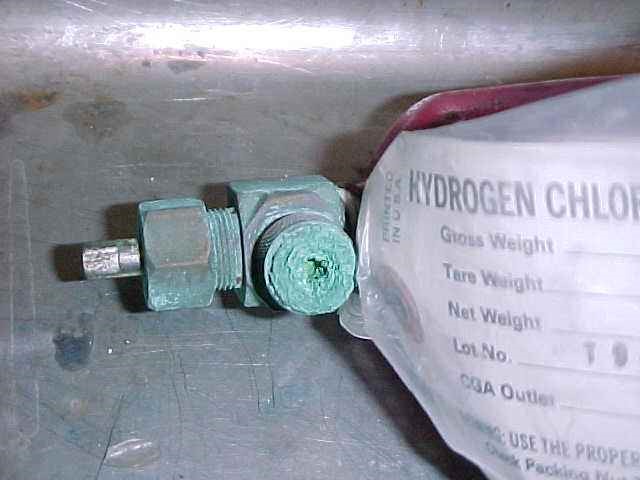
- Only use regulators and tubing that are appropriate for the gas. For example, stainless steel regulators and tubing must be used for corrosive gases. Using the wrong regulator can compromise the gas purity, cause equipment failure and cause injury to laboratory personnel.
- Lecture bottles must be properly secured during use and lecture bottles containing hazardous gases (corrosive or poison) must be used in a fume hood or gas cabinet.
Lecture Bottle Storage
- Lecture bottles must be stored in an upright position. Lecture bottles stored on their side are more susceptible to damage, corrosion and leaks.
- Segregate incompatible gases, such as flammable and oxidizing gases.
- Store poisonous gases in a fume hood or a ventilated gas cabinet.
- Regulators must be removed during storage. It is a good idea to label the regulator with the gas it is used for to prevent accidental misuse in the future.
- Lecture bottles must be properly labeled. Re-label the lecture bottle if the label becomes illegible or falls off.
Example of Proper Lecture Bottle Storage
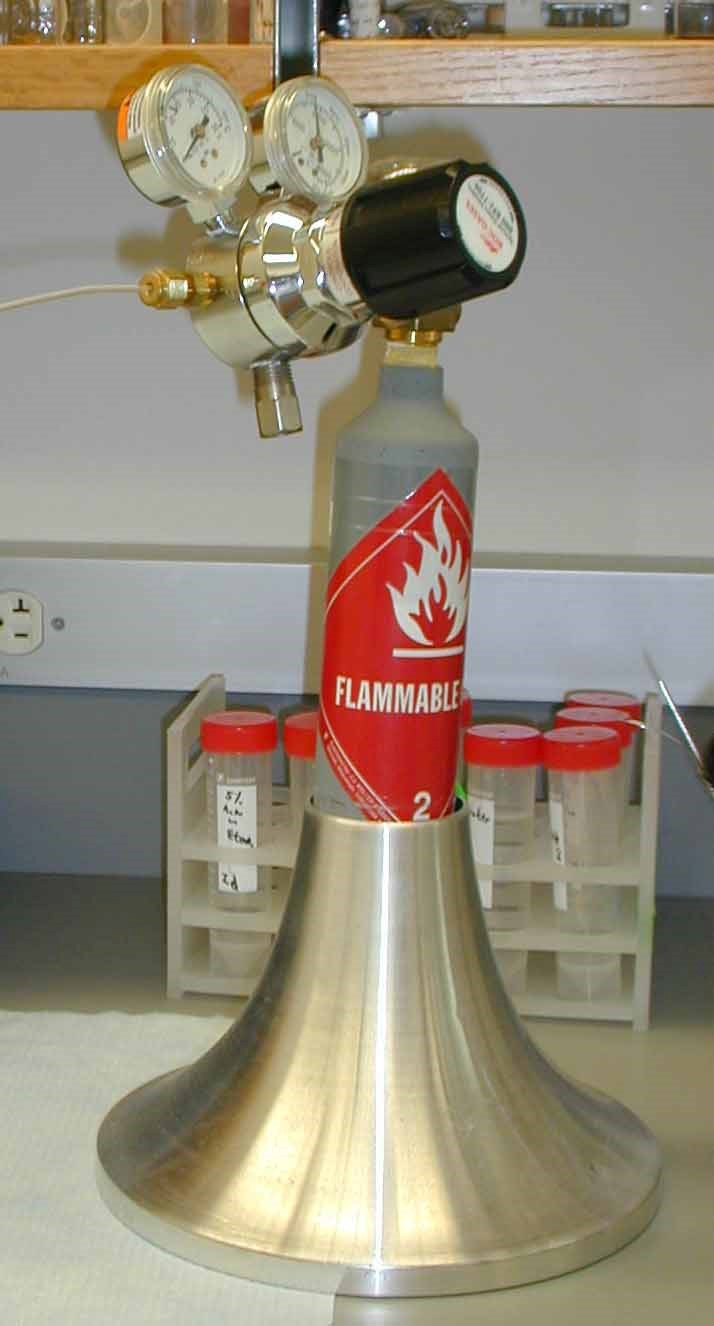
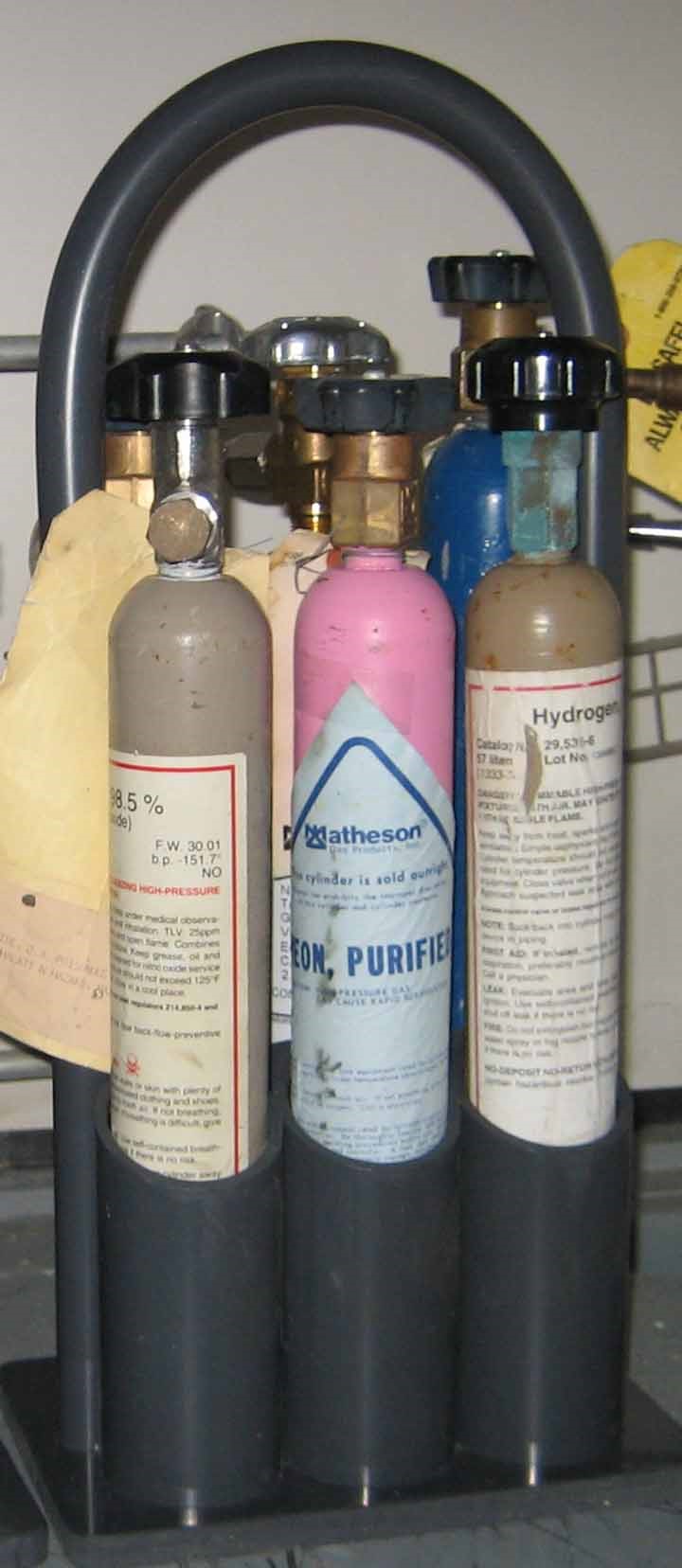
Examples of Improper Lecture Bottle Storage
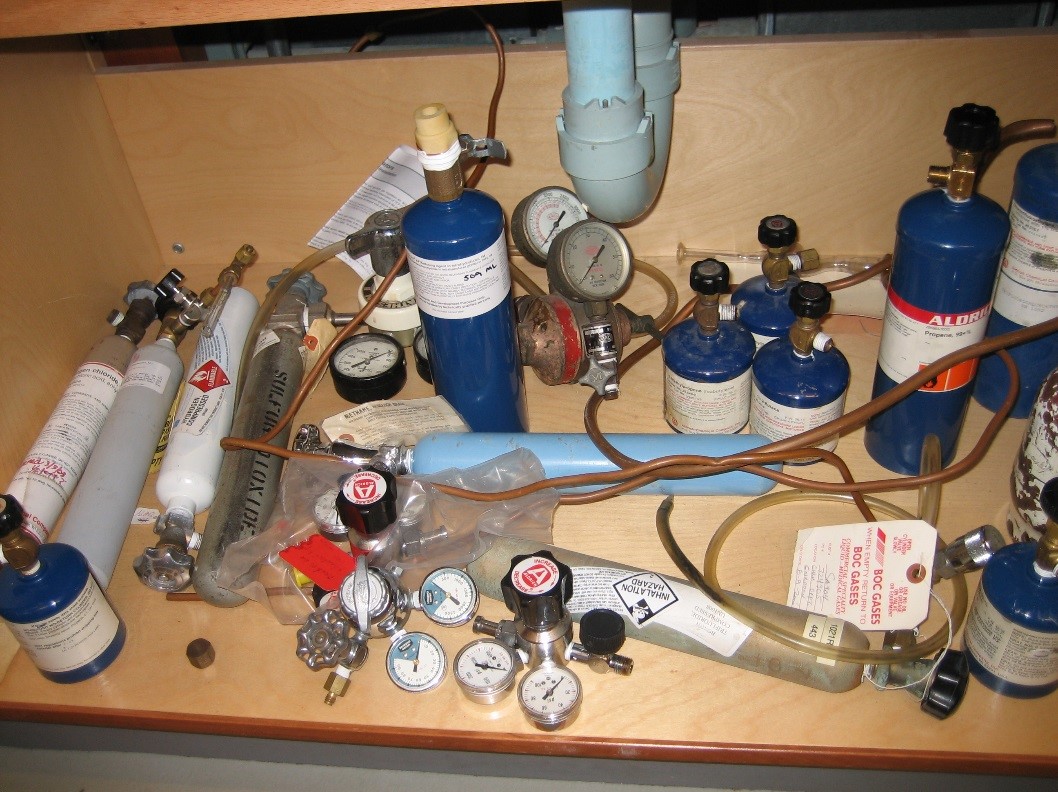
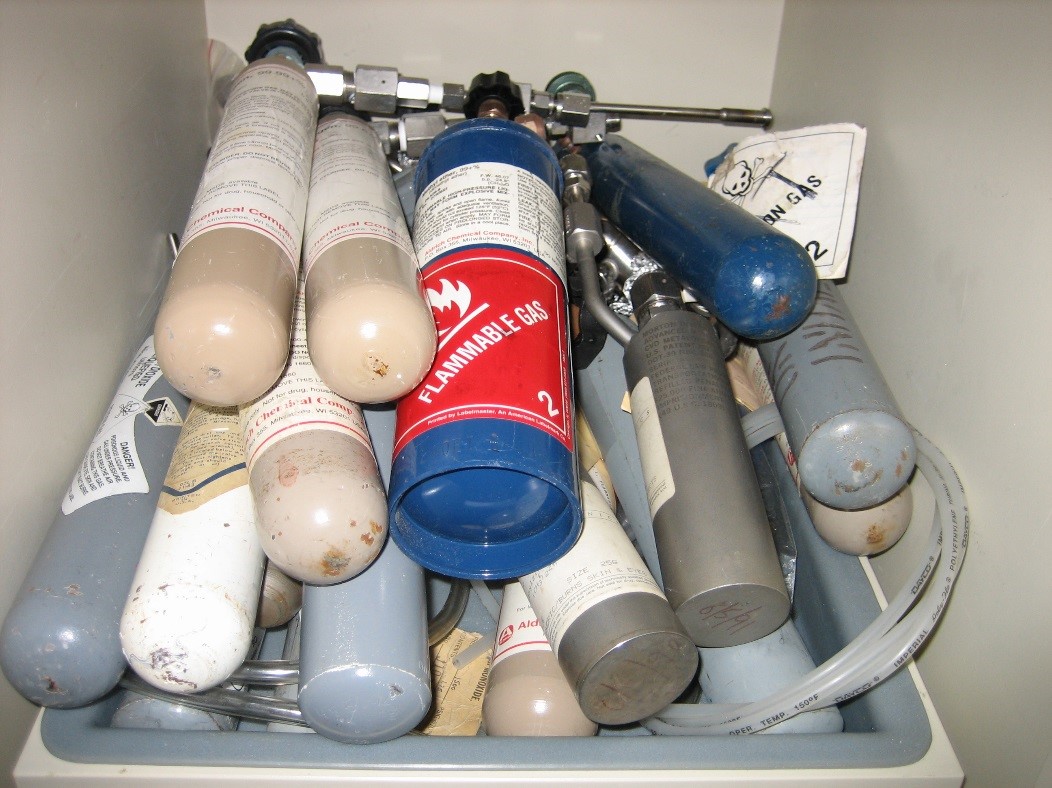
Lecture Bottle Purchase and Disposal
Unlike other gas cylinders, lecture bottles are not refillable and are purchased outright by the laboratory. Most gas manufacturers do not take back lecture bottles.
Lecture bottles are costly to dispose of. Costs for disposal can range from $100 for a non-hazardous, properly labeled lecture bottle to over $1000 for a hazardous or unlabeled lecture bottle. Contact EHRS for disposal of old or unneeded lecture bottles.
Two manufacturers will take back lecture bottles, if they meet certain criteria. Matheson Tri-Gas and Sigma-Aldrich will take back lecture bottles for a fee. The gases must have been purchased from those companies and must be in good condition. The laboratory must have the original purchasing information. EHRS will assist laboratories in returning lecture bottles.
EHRS encourages laboratories to purchase lecture bottles from these vendors, whenever possible.
Emergencies
Emergency Contacts
If you suspect that you may have experienced an exposure to a hazardous gas, seek medical attention immediately.
General emergency response information can be found at Emergency Info
Gas Leaks
If you observe or suspect that hazardous or inert gas is leaking:
- Attempt to turn off the cylinder at the cylinder valve if it is safe to do so
- If you are unable to turn off the gas or have any doubts, evacuate the area and contact EHRS immediately
- Prevent others from entering the area of the suspected gas leak until responders arrive
Do not hesitate to call EHRS for assistance with compressed gas leaks or exposure concerns
24 hours: 215-898-4453
Contact Penn Police (511) only if the leak involves a fire, imminent risk of fire, an injury requiring an ambulance, or if there is a hazard that may affect others in the building.
Anhydrous Hydrogen Fluoride Safety Alert
Anhydrous hydrogen fluoride reacts over time with the iron in the steel to form iron fluoride and hydrogen. The hydrogen pressure can build up to the point where it ruptures the cylinder.
Anhydrous hydrogen fluoride lecture bottles must be disposed of within 2 years of purchase.
See Anhydrous Hydrogen Fluoride Gas Fact Sheet for more information.